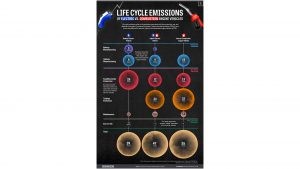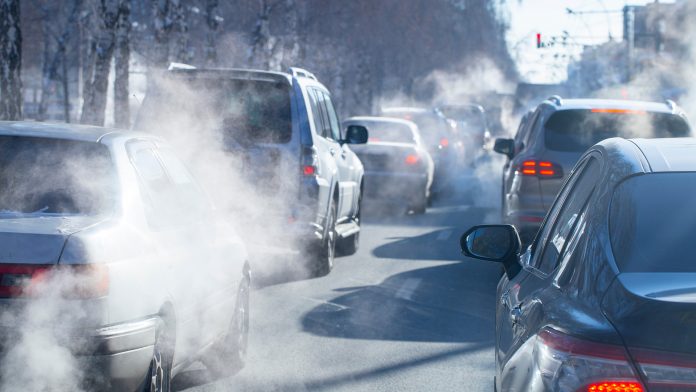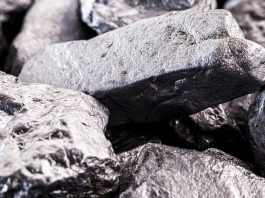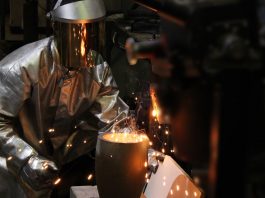HPQ Silicon outlines the life cycle emissions of different types of vehicles and highlights the crucial role sustainable silicon solutions can play in reducing these emissions.
HPQ Silicon is an advanced materials engineering provider that offers sustainable silica (Si02) and silicon (Si) solutions. Based in Québec, Canada, HPQ Silicon is developing a unique portfolio of value-added silicon products sought after by electric vehicle (EV) and battery manufacturers, among other industries. By enhancing battery efficiency and revolutionising the production process, HPQ Silicon’s technology holds the potential to reduce vehicle life cycle emissions, paving the way for a more sustainable future.
The transportation sector, contributing 37% of all CO2 emissions from end-use sectors in 2021, is one of the most significant contributors to global carbon emissions. As we move towards a carbon-neutral economy, it becomes crucial to understand and compare the life cycle emissions of different types of vehicles – battery electric vehicles (BEVs), hybrid electric vehicles, and internal combustion engine (ICE) vehicles. In this context, the role of innovative companies like HPQ Silicon, which provides sustainable silicon solutions, becomes crucially important.
The vehicle life cycle emissions breakdown
Visual Capitalist, a platform focused on making the world’s information more accessible through graphics, published an article titled: ‘Life Cycle Emissions: EVs vs. Combustion Engine Vehicles’.
The article discusses the life cycle emissions of three types of vehicles: battery electric vehicles (BEVs), hybrid electric vehicles, and internal combustion engine (ICE) vehicles. It uses data from the International Energy Agency (IEA), the Polestar and Rivian’s Pathway Report, and a McKinsey & Company study to comprehensively compare the greenhouse gas emissions across the life cycle of these vehicles. The emissions include the emissions from vehicle production, use, and disposal.
A key graphic put together by Visual Capitalist (Fig. 1) breaks down the emissions in terms of metric tons of CO2 equivalent (tCO2e) for each stage of a vehicle’s life cycle for a medium-sized vehicle over 16 years and a distance of 240,000km. It shows that a BEV produces 39 tCO2e, a hybrid electric vehicle produces 47 tCO2e, and an internal combustion engine (ICE) vehicle produces 55 tCO2e.

At first glance, BEVs emerge as the most environmentally-friendly option, boasting the lowest life cycle emissions among the three types of vehicles. However, a closer look reveals that the journey towards lower emissions is not as straightforward as it might appear.
The production paradox
Interestingly, the production emissions for BEVs are approximately 40% higher than those of hybrid and ICE vehicles. This is primarily due to the energy-intensive extraction and refining of raw materials like lithium, cobalt, and nickel, required for battery production and the BEVs’ manufacturing process. These findings present a ‘production paradox’—while BEVs are championed for their potential to reduce emissions during the use phase, their production process is inherently carbon-intensive.
The data further reveals that electricity production is the most emission-intensive stage in a BEV’s life cycle. Decarbonising the electricity sector by implementing renewable and nuclear energy sources could significantly reduce vehicle life cycle emissions, highlighting the intertwined nature of our energy and transportation sectors.
The potential of recycling
All vehicle types, including BEVs, hybrids, and ICE vehicles, can offset a portion of their life cycle emissions by recycling materials and components during their end-of-life stages. This suggests that a circular economy approach, focusing on reuse and recycling, can play a pivotal role in lowering the overall emissions of the transportation sector.

Enter HPQ Silicon
HPQ Silicon, an advanced materials engineering provider, offers sustainable silicon solutions that can transform the electric vehicle and battery manufacturing landscape. The company is developing a new manufacturing process for producing silicon, a semi-conductive material and a critical input in a wide range of modern technologies and industrial and consumer goods.
Silicon plays a pivotal role in battery technology. By enhancing the performance of lithium-ion batteries commonly used in electric vehicles, silicon anodes can significantly improve the energy density of these batteries. This leads to longer ranges and potentially reduces the need for frequent charging, reducing the emissions associated with electricity production – one of the most emission-intensive stages in a BEV’s life cycle.
Moreover, the company’s focus on developing new and sustainable silicon production processes can also contribute to lowering the production emissions for BEVs. By making the production process more efficient and less reliant on fossil fuels, companies like HPQ Silicon can help decarbonise the battery production process, significantly contributing to a BEV’s overall life cycle emissions.
As we transition towards a carbon-neutral economy, BEVs have a substantial role to play in reducing global CO2 emissions. However, it is essential to recognise that their life cycle is still emission-intensive, particularly during manufacturing and electricity production. Companies like HPQ Silicon, with their innovative silicon solutions, hold the potential to significantly reduce these emissions, making the transition to electric vehicles not just a necessary step but a more sustainable one.
The journey towards lower vehicle life cycle emissions is not a straight path but a multifaceted process involving improvements in vehicle technology, electricity production changes, and material science innovations. As we continue to innovate and improve, we move closer to a truly sustainable future for the transportation sector.
Please note, this article will also appear in the fifteenth edition of our quarterly publication.









